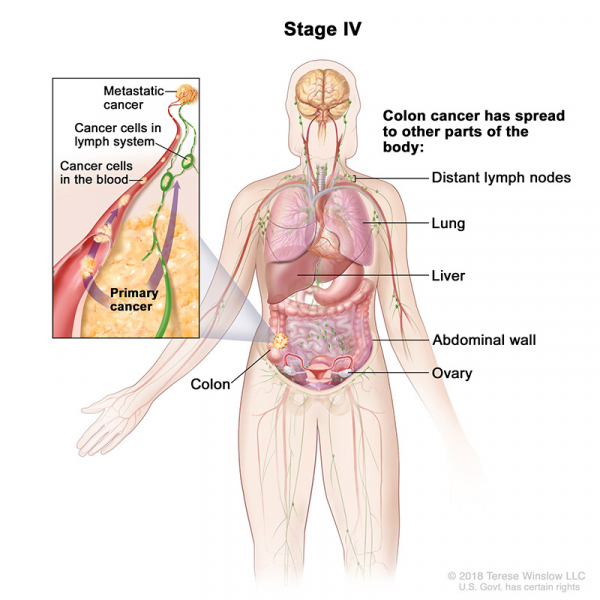If the biopsy shows that cancer is present, your doctor will need to know the extent, or stage, of the disease in order to plan the best treatment. The stage is based on whether the tumor has invaded nearby tissues, whether the cancer has spread and, if so, to what parts of the body.
Staging of Colorectal Cancer
According to the American Cancer Society, the TNM system, created by the American Joint Committee on Cancer (AJCC), is the most widely used.
TNM stands for:
- T: the size of the tumor and any spread of cancer into nearby tissue
- N: the spread of cancer to nearby lymph nodes
- M: metastasis (spread of cancer to other parts of the body)
Patients are given a T, N and M status. When combined, they determine the stage of colorectal cancer.
There are 5 stages: stage 0 (zero) and stages I through IV (1 through 4). The stage provides a common way of describing the cancer, so doctors can work together to plan the best treatments.
T followed by a letter or number (0 to 4) is used to describe how deeply the primary tumor has grown into the bowel lining.
- TX: The primary tumor cannot be evaluated.
- T0: There is no evidence of cancer in the colon or rectum.
- Tis: Refers to carcinoma in situ (also called cancer in situ). Cancer cells have not grown beyond the inner layer (mucosa) of the colon or rectum.
- T1: The tumor has grown into the submucosa— the layer of tissue underneath the mucosa or lining of the colon or rectum.
- T2: The tumor has grown into the muscularis propria, a deeper, thick layer of muscle that is responsible for moving food down the gut.
- T3: The tumor has grown through the outermost layers of the colon or rectum but has not gone through them nor has it reached nearby organs..
- T4a: The cancer has grown through all layers of the colon.
- T4b: The cancer has grown into or has attached to other organs or structures.
N followed by a letter or number (0 to 2) indicates whether the cancer has spread to lymph nodes near the colon and rectum (called regional lymph nodes).
- NX: The regional lymph nodes cannot be evaluated.
- N0: There is no spread to regional lymph nodes.
- N1a: There are cancer cells found in 1 regional lymph node.
- N1b: There are cancer cells found in 2 or 3 regional lymph nodes.
- N1c: There are nodules made up of tumor cells found in areas of fat near the colon but not the nodes themselves.
- N2a: There are cancer cells found in 4 to 6 regional lymph nodes.
- N2b: There are cancer cells found in 7 or more regional lymph nodes.
M followed by a letter or number (0 to 1) describes cancer that has spread to other parts of the body, such as the liver or lungs. This is called distant metastasis.
- M0: The cancer has not spread to a distant part of the body.
- M1a: The cancer has spread to 1 other part of the body beyond the colon or rectum.
- M1b: The cancer has spread to more than 1 part of the body other than the colon or rectum.
- M1c: The cancer has spread to distant parts of the peritoneum (the lining of the abdominal cavity). It also may or may not have spread to distant organs or lymph nodes.
Colorectal Cancer Stage Grouping
The cancer is in its earliest stage. This is called cancer in situ. The cancer cells are only in the mucosa, or the inner lining, of the colon or rectum.
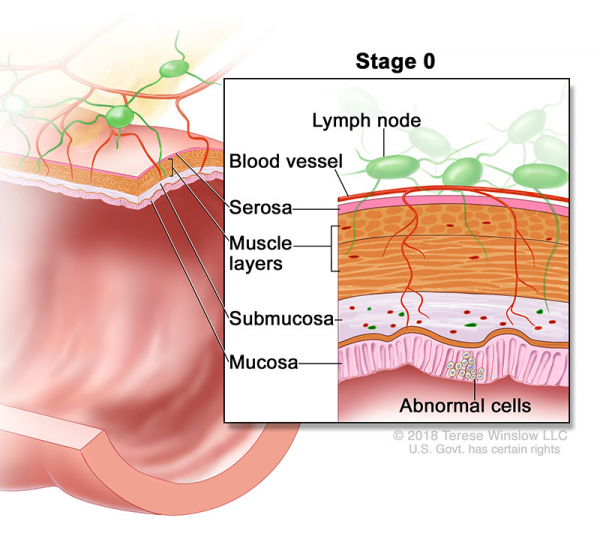
The cancer has grown through the mucosa and has invaded the muscular layer of the colon or rectum. It has not spread into nearby tissue or lymph nodes (T1 or T2, N0, M0).
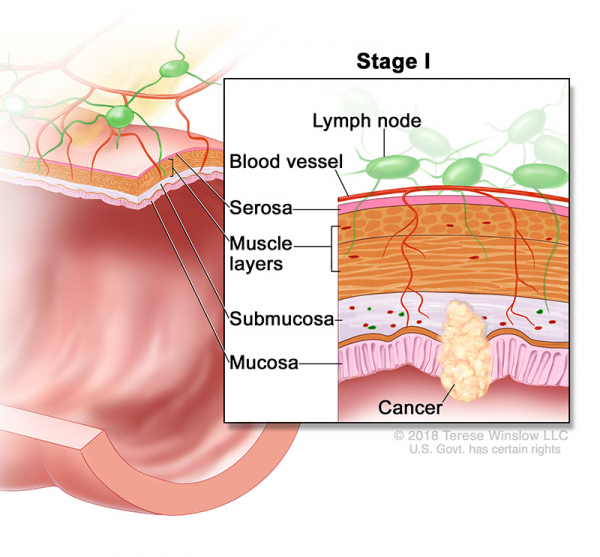
- Stage IIA: The cancer has grown through the wall of the colon or rectum but has not spread to nearby tissue or to the nearby lymph nodes (T3, N0, M0).
- Stage IIB: The cancer has grown through the layers of the muscle to the lining of the abdomen, called the visceral peritoneum. It has not spread to the nearby lymph nodes or elsewhere (T4a, N0, M0).
- Stage IIC: The tumor has spread through the wall of the colon or rectum and has grown into nearby structures. It has not spread to the nearby lymph nodes or elsewhere (T4b, N0, M0).

- Stage IIIA: The cancer has grown through the inner lining or into the muscle layers of the intestine. It has spread to 1 to 3 lymph nodes or to a nodule of tumor cells in tissues around the colon or rectum that do not appear to be lymph nodes but has not spread to other parts of the body (T1 or T2, N1 or N1c, M0; or T1, N2a, M0).

- Stage IIIB: The cancer has grown through the bowel wall or to surrounding organs and into 1 to 3 lymph nodes or to a nodule of tumor in tissues around the colon or rectum that do not appear to be lymph nodes. It has not spread to other parts of the body (T3 or T4a, N1 or N1c, M0; T2 or T3, N2a, M0; or T1 or T2, N2b, M0).
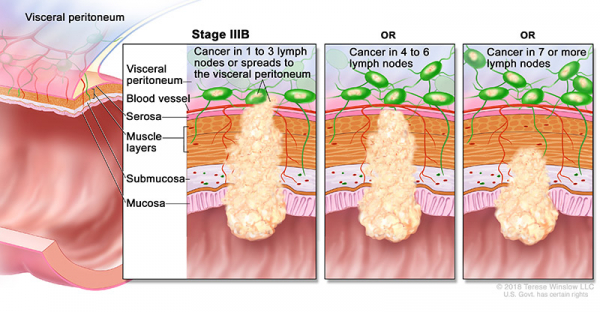
- Stage IIIC: The cancer of the colon, regardless of how deep it has grown, has spread to 4 or more lymph nodes but not to other distant parts of the body (T4a, N2a, M0; T3 or T4a, N2b, M0; or T4b, N1 or N2, M0).
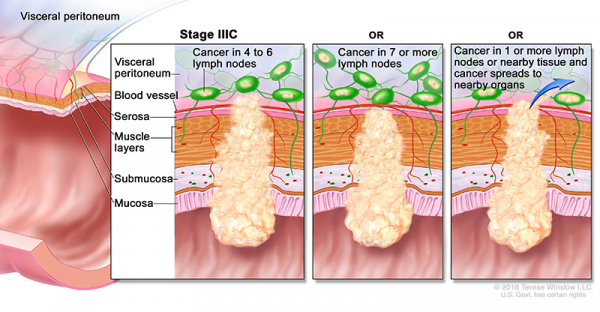
- Stage IVA: The cancer has spread to a single distant part of the body, such as the liver or lungs (any T, any N, M1a).
- Stage IVB: The cancer has spread to more than 1 part of the body (any T, any N, M1b).
- Stage IVC: The cancer has spread to the peritoneum. It may also have spread to other sites or organs (any T, any N, M1c).
